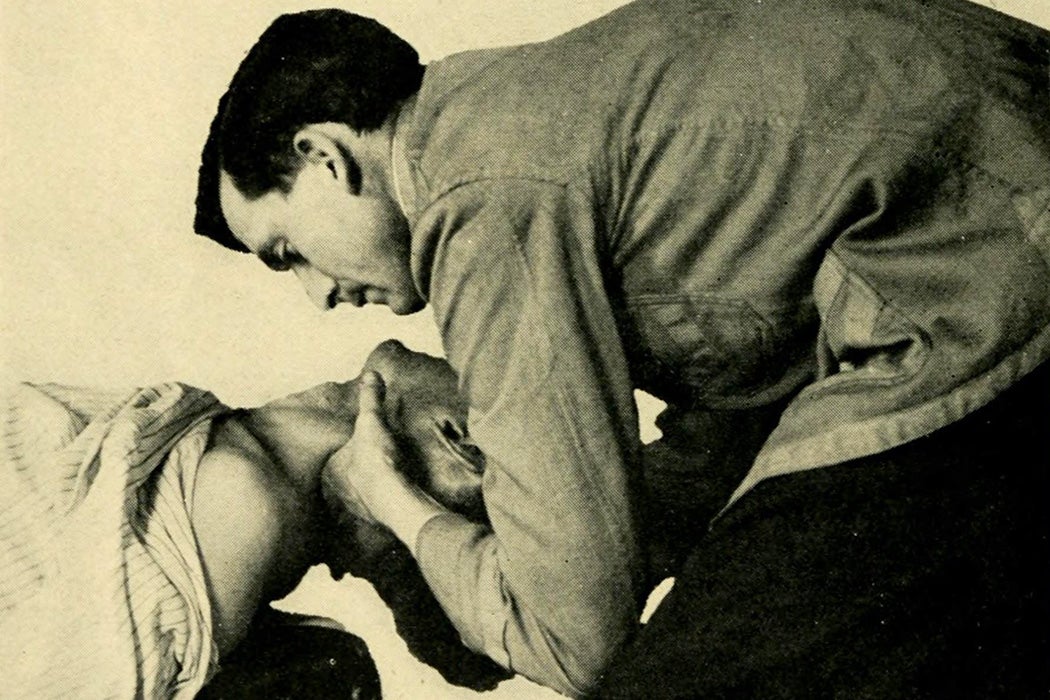If you’ve considered seeing a chiropractor for a back problem, you may not have thought much about how the treatment could affect your spiritual life. But, as religious studies scholar Candy Gunther Brown writes, chiropractic began as a distinct approach to the human condition that was explicitly opposed to mainstream Christian theology.
Brown writes that, before he became the founder of chiropractic, Daniel David Palmer was a Spiritualist and practitioner of animal magnetism. Palmer subscribed to eclectic spiritual ideas based on the unity of God and nature and the idea that humans can restore themselves to a state of harmony without depending on divine intervention.
Palmer claimed to have received communication from a deceased physician who taught him the principles of chiropractic—a term he invented in 1896, combining the Greek words cheir and praktos to mean “done by hand.”
Palmer considered introducing Chiropractic as a religion in its own right but ultimately settled on describing it as an amalgamation of Christian Science and modern medicine. He wrote that it was based on adjusting the body to permit the free flow of “Innate Intelligence,” or just “Innate,” which he explained as “a segment of that Intelligence which fills the universe” (i.e. God) found in each individual.
“Palmer insisted that chiropractic could not be practiced effectively apart from a philosophy which he thought captured the essence of the world’s religious and medical systems,” Brown writes.
Palmer’s son, Bartlett Joshua Palmer, continued his father’s work, leading the Palmer School of Chiropractic in Iowa, which trained about 75 percent of all chiropractors for 50 years. The younger Palmer was more forthright than the elder in his opposition to Christianity, writing that “no Chiropractor would pray on his knees in supplication to some invisible power.”
Nonetheless, Brown writes, many patients apparently found seeing a chiropractor compatible with their Christian faith. Often, chiropractors served rural, working-class people, who were frequently suspicious of allopathic medicine.
In 1963, the American Medical Association formed a Committee on Quackery with the mission “to contain and eliminate chiropractic.” Yet chiropractic continued to appeal to some patients, including, by the 1970s, many who were frustrated by the expense, inaccessibility, and impersonal treatment they associated with medical doctors. The profession also won support from authorities including the US Office of Education, which established an accrediting agency for chiropractic colleges, and all 50 state governments, which created chiropractic licensing laws.
Weekly Newsletter
In the latter decades of the twentieth century, chiropractors and their organizations generally dropped the more esoteric descriptions of their practices, instead focusing on the physical side of their interventions. Some eliminated the loaded term “innate” in favor of arguing that their practice supported the body’s “inherent” power to heal.
With their increasingly official, medial appearance, Brown writes, chiropractors earned the trust of many Christians who were put off by other “New Age” treatments like acupuncture and yoga. And, in fact, today most chiropractors self-identify as Christian even as many also often continue to subscribe to the basic metaphysical frameworks created by the Palmers.
Support JSTOR Daily! Join our membership program on Patreon today.







